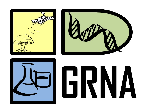Banca de DEFESA: GEOMARCOS DA SILVA PAULINO
Uma banca de DEFESA de MESTRADO foi cadastrada pelo programa.DISCENTE : GEOMARCOS DA SILVA PAULINO
DATA : 21/02/2020
HORA: 09:00
LOCAL: Sala 107 - Campus Amazônia
TÍTULO:
...
PALAVRAS-CHAVES:
Microbial biomass; land use; fertility; native forest.
PÁGINAS: 34
GRANDE ÁREA: Outra
ÁREA: Ciências Ambientais
RESUMO:
Microbial biomass is an important biological indicator because it is sensitive to environmental changes and can provide important information about the use and proper management of the soil. Therefore, the objective of this work was to evaluate changes in soil fertility, the content of carbon, nitrogen and phosphorus in soil microbial biomass as a function of management practices and land use change, comparing agricultural areas with an area of native forest in western Pará. The soil samples were collected in eight different areas, where plots of 25x50 m were delimited in which composite samples were collected, consisting of nine simple samples per area, at depths 0-10 and 10-20 cm for analysis of chemical attributes, and for analysis of biological attributes, six samples were collected per plot, consisting of three simple samples each, at depths of 0-10 and 10-20 cm, making a total of 48 samples. After collection, the samples were placed in a thermal box and sent to the soil department of the Emilio Goeldi museum for analysis of the chemical and biological attributes of the soil. The data obtained were subjected to descriptive statistics, means test and graphing, in addition to these tests, Pearson linear correlation for biological attributes was performed using the Past software. The results show that the macro and micronutrients showed high variation between the studied areas, and when compared with the native forest it was found that the majority of the agricultural soils differed from the forest soil. With the exception of the fruit-growing area, all agricultural soils showed high Al levels that corroborate the high values of aluminum saturation. In all areas, the Na content was negligible. As for the biological attributes, it was found that the levels of C and P of microbial biomass in agricultural soils differed from the forest area. The highest values of C mic, N mic and P mic were in the soil under pasture (1897 µg.g-1), ILPF (64.59 mg.Kg-1) and fruit (81.56 mg.Kg-1), respectively. It is concluded that the variation of chemical attributes in soils shows that the change in land use has altered their concentrations. Most of them, even when there were no significant differences, presented values above those registered in the forest soil. And that the biological attributes of the soil, evaluated in the different land use systems, are influenced by the cover crops and management practices adopted because soils with little or no soil revolving, with high input of plant biomass and with the use of fertilizers organisms favored the increase of microbial biomass.
MEMBROS DA BANCA:
Externo à Instituição - MAURO BRUM MONTEIRO JUNIOR
Externa ao Programa - 2143148 - QUEZIA LEANDRO DE MOURA GUERREIRO
Presidente - 106.087.702-30 - RAIMUNDO COSME DE OLIVEIRA JUNIOR - EMBRAPA
Interno - 1776710 - TROY PATRICK BELDINI




